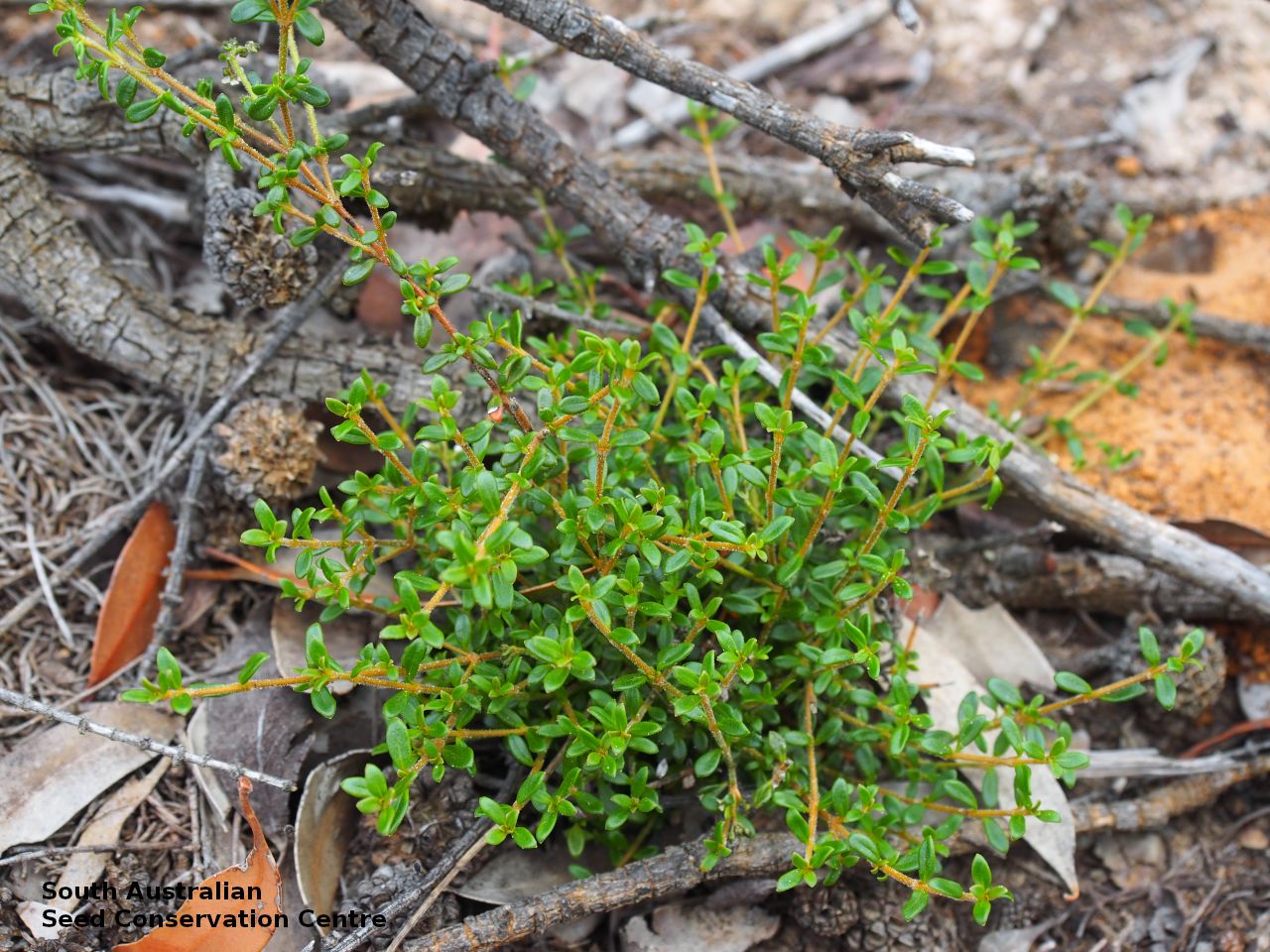
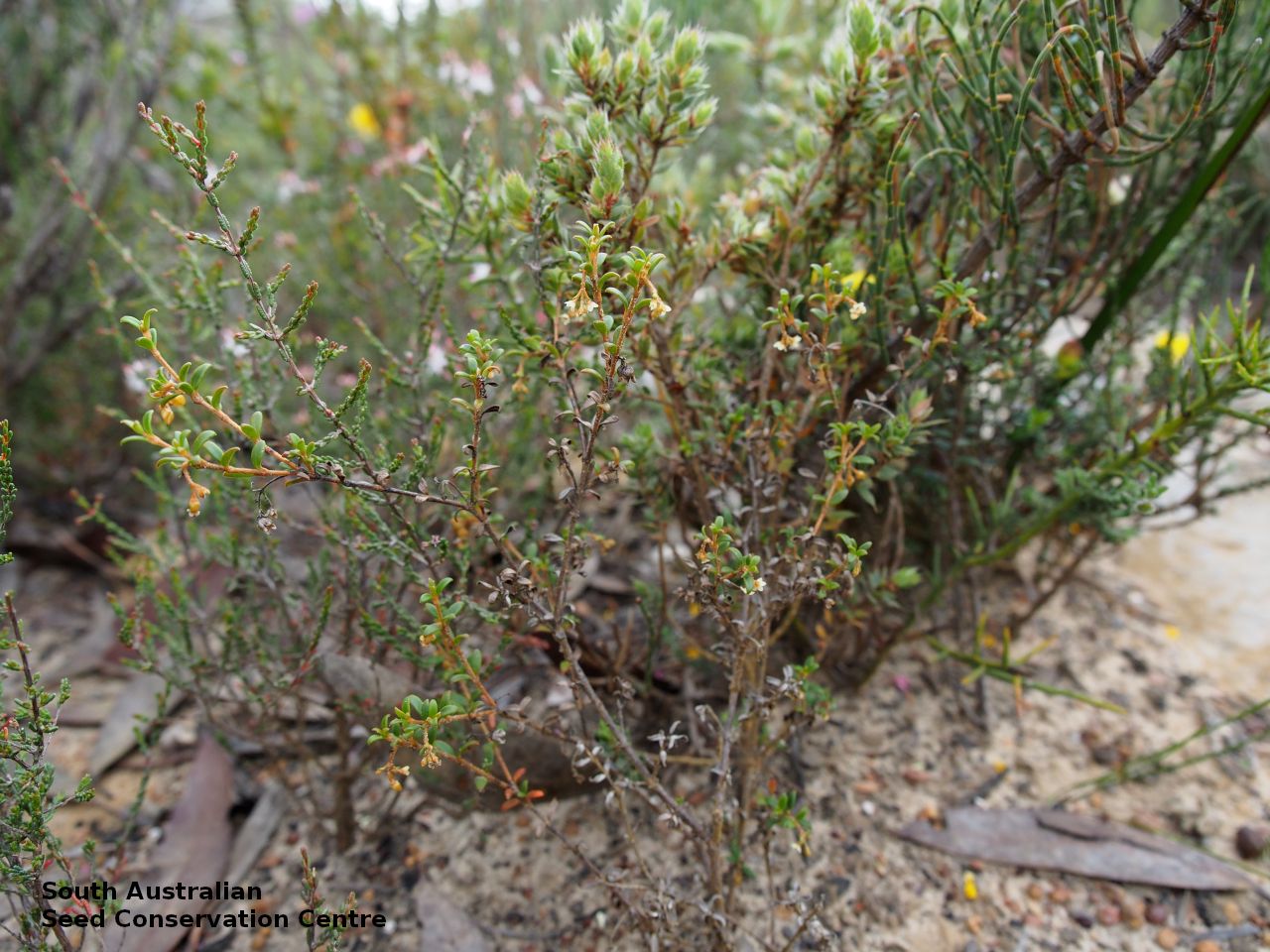
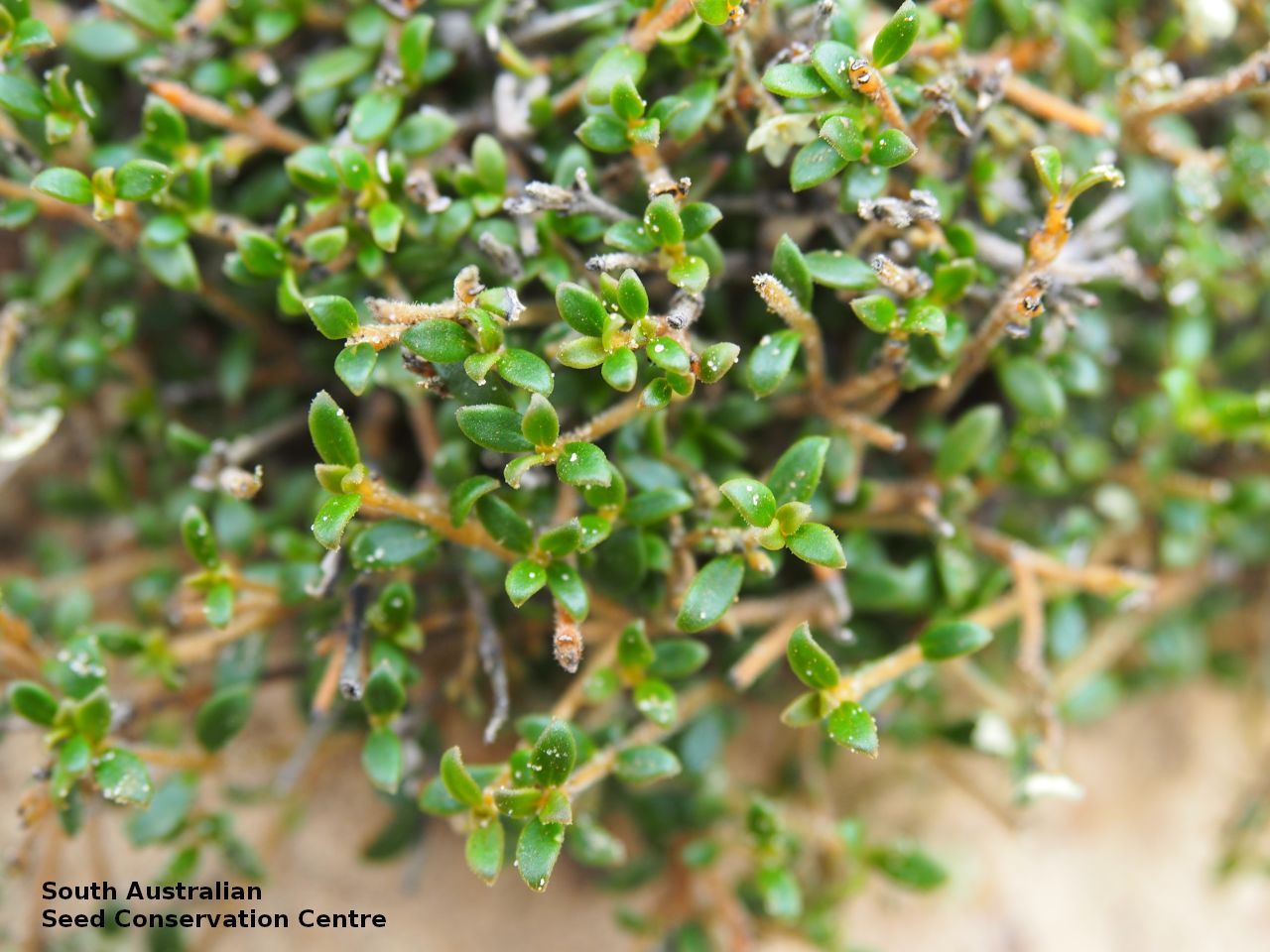
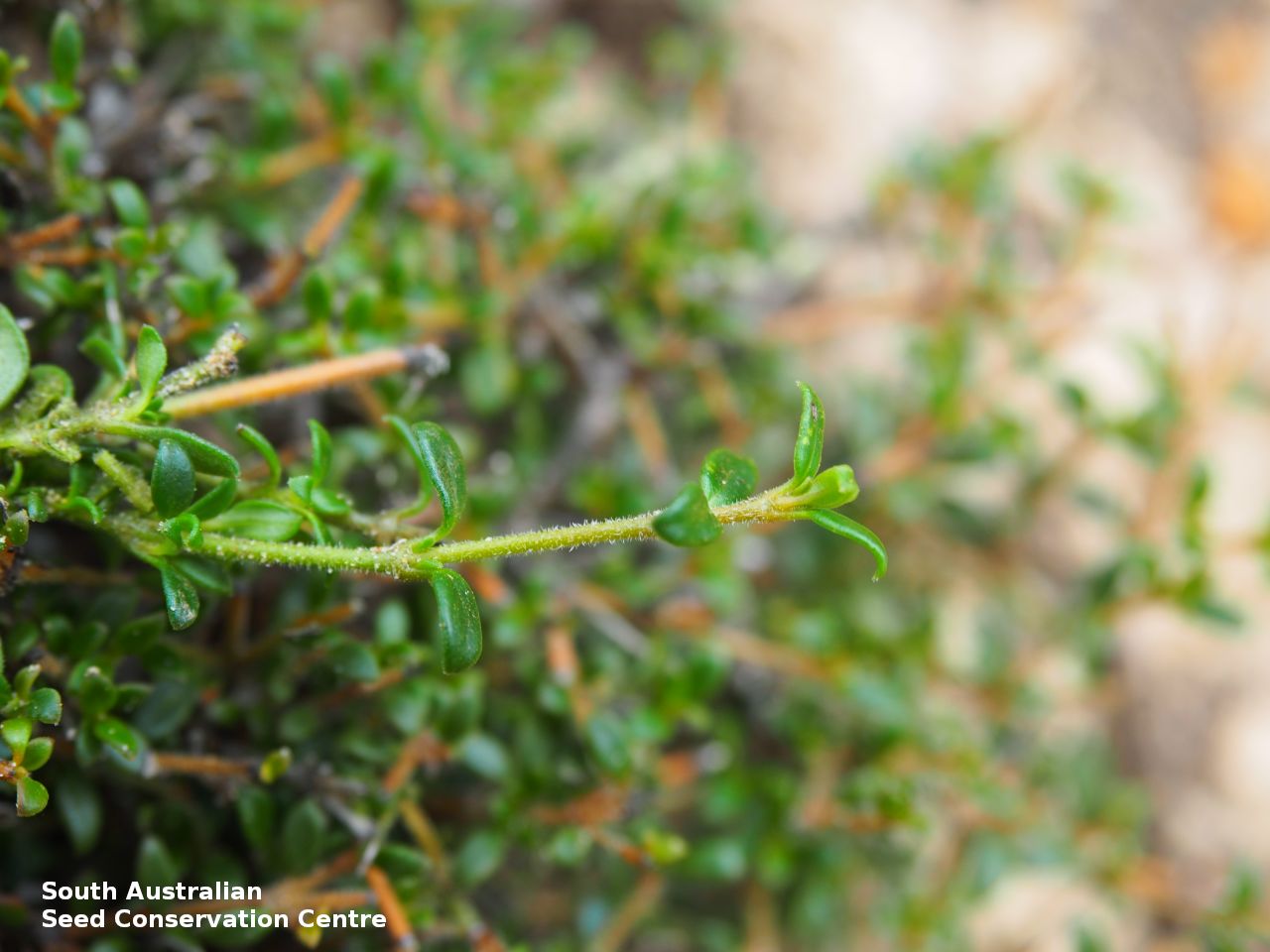
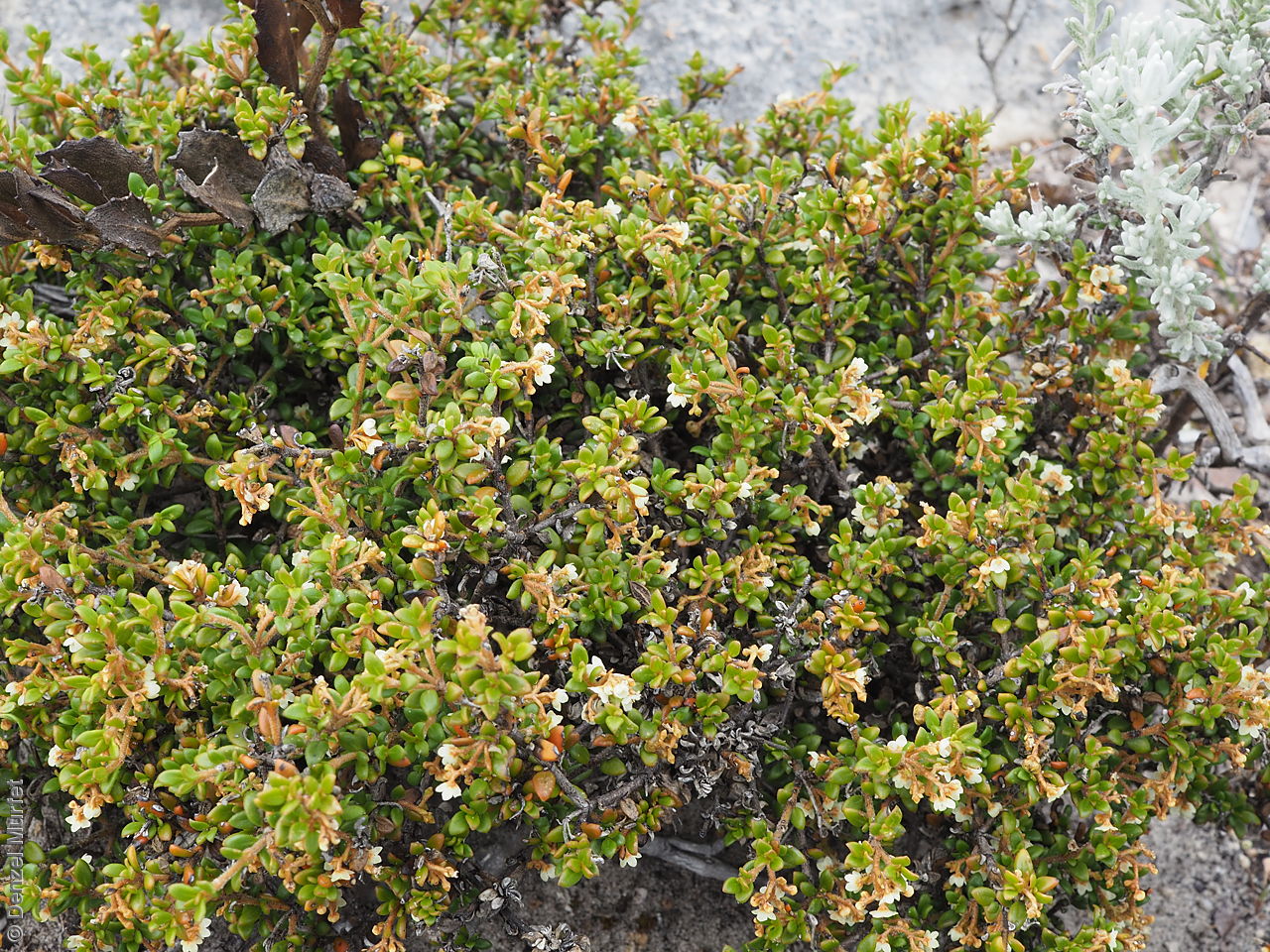
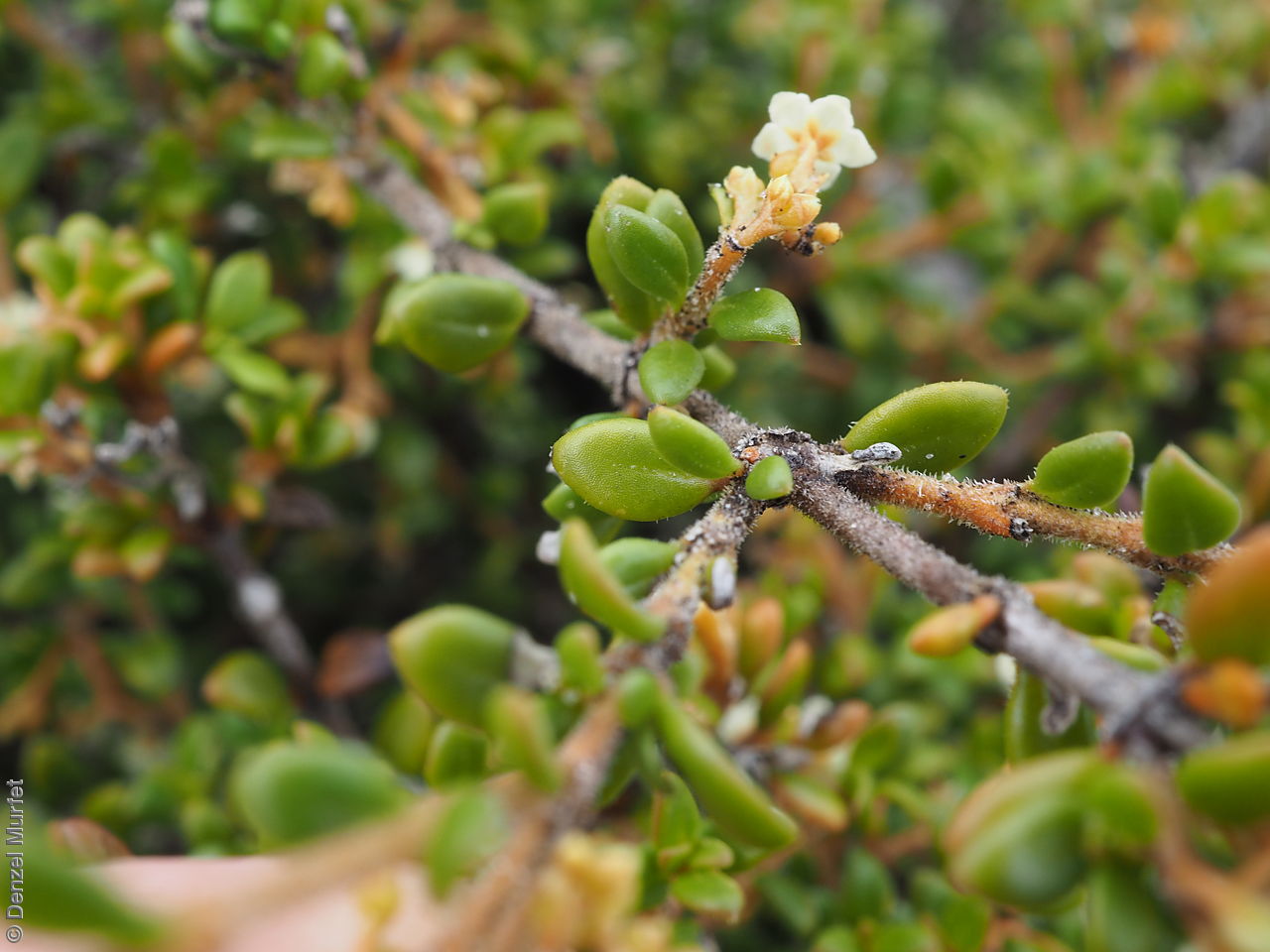
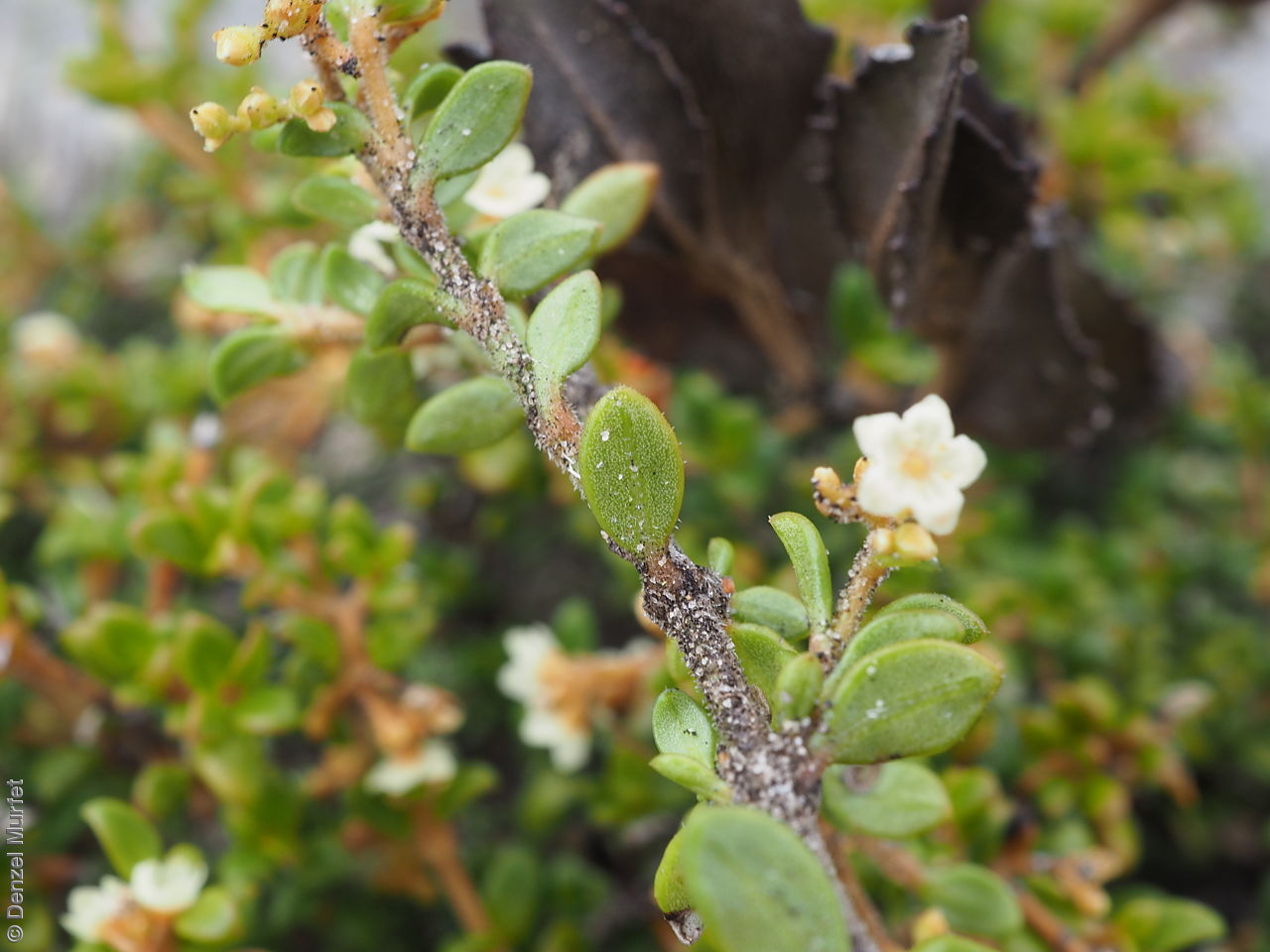
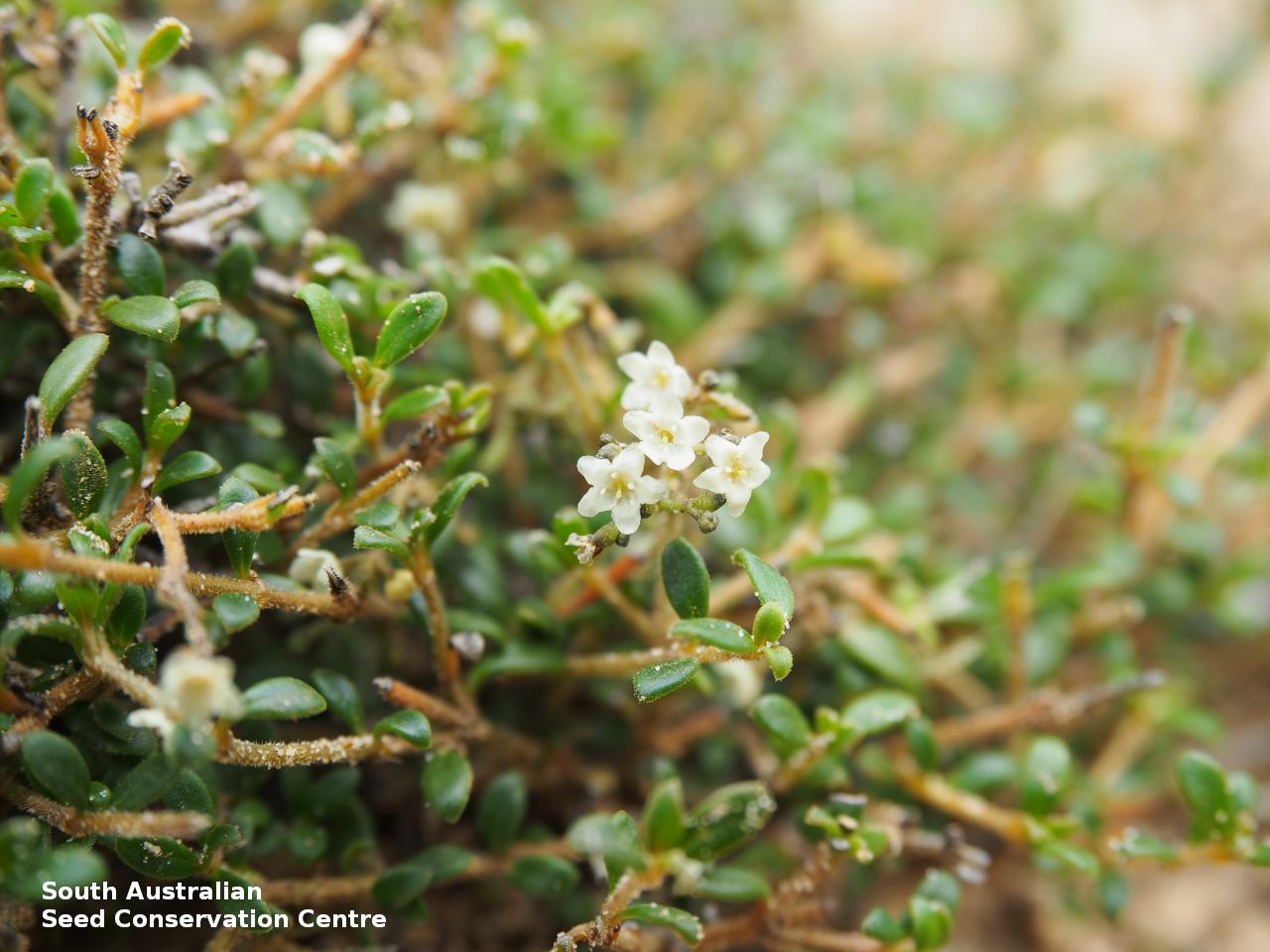
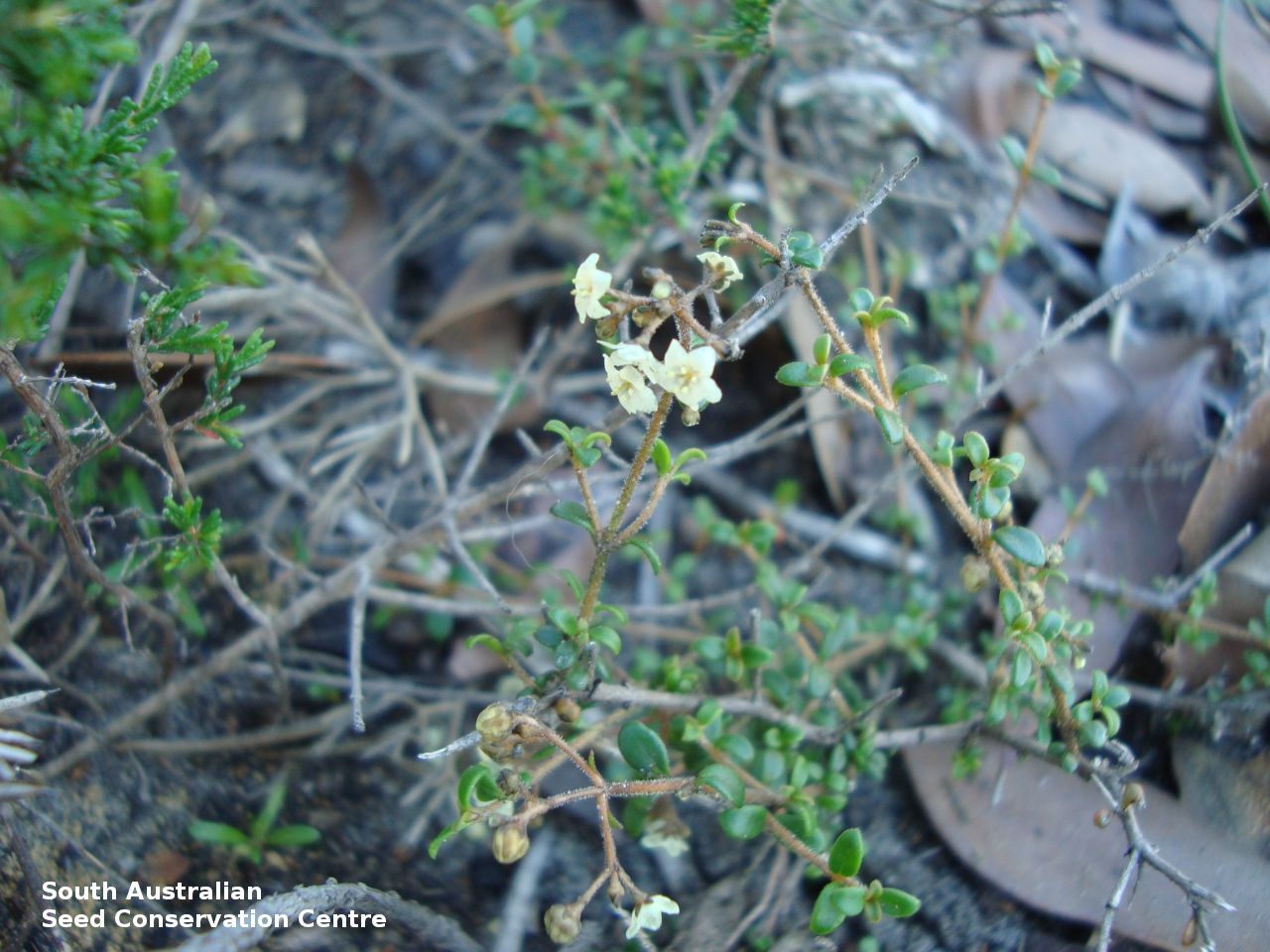
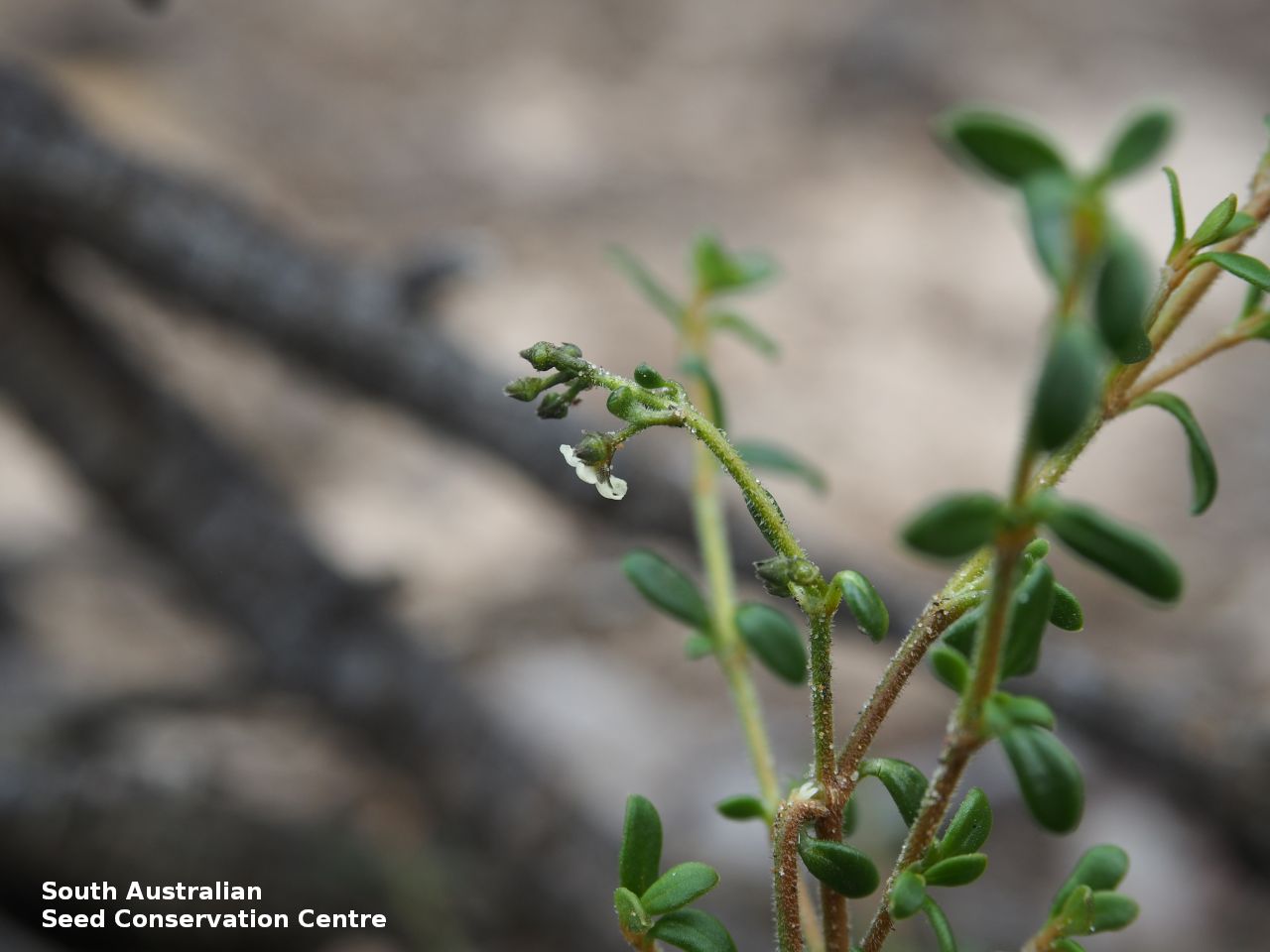
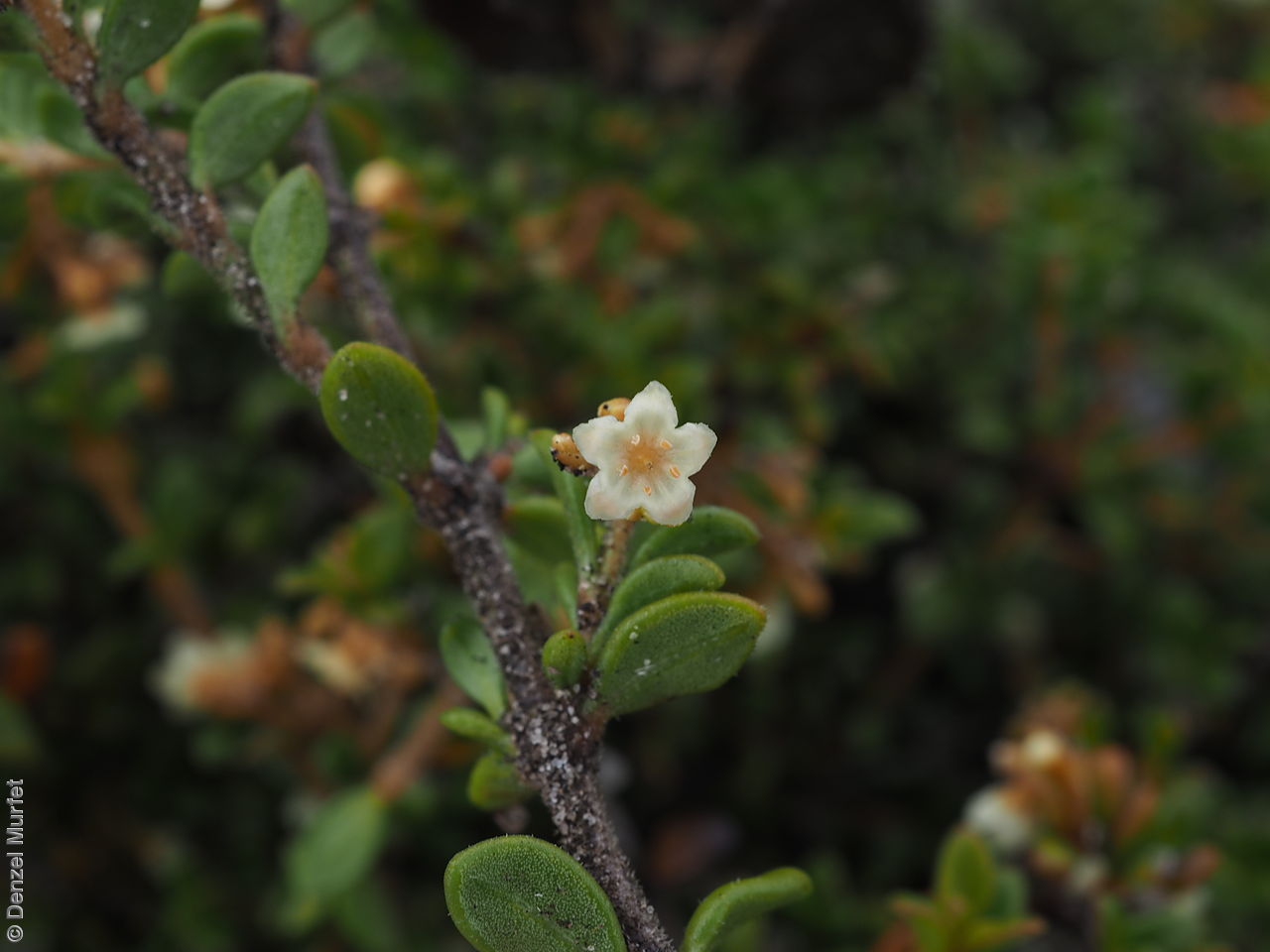
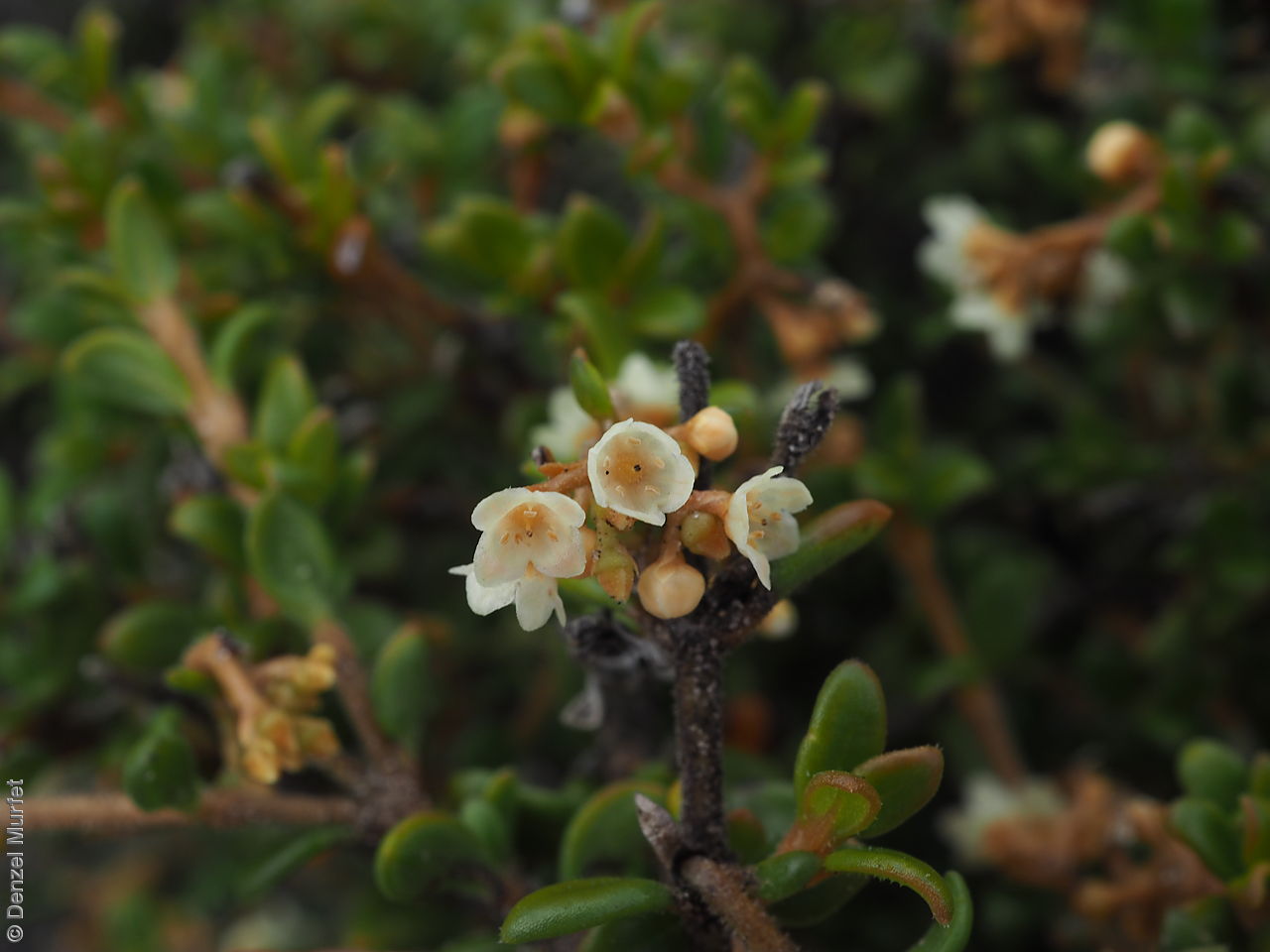
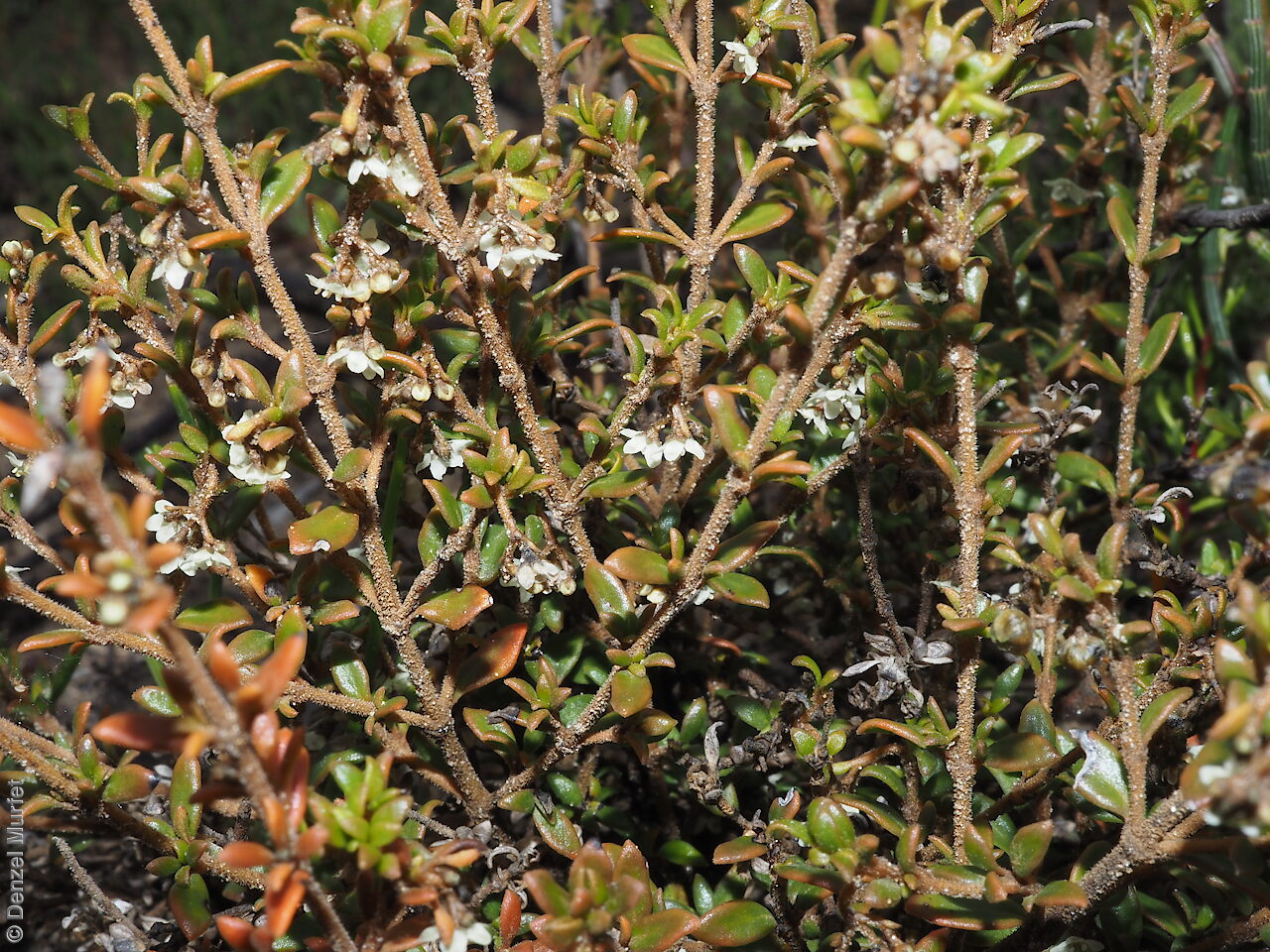

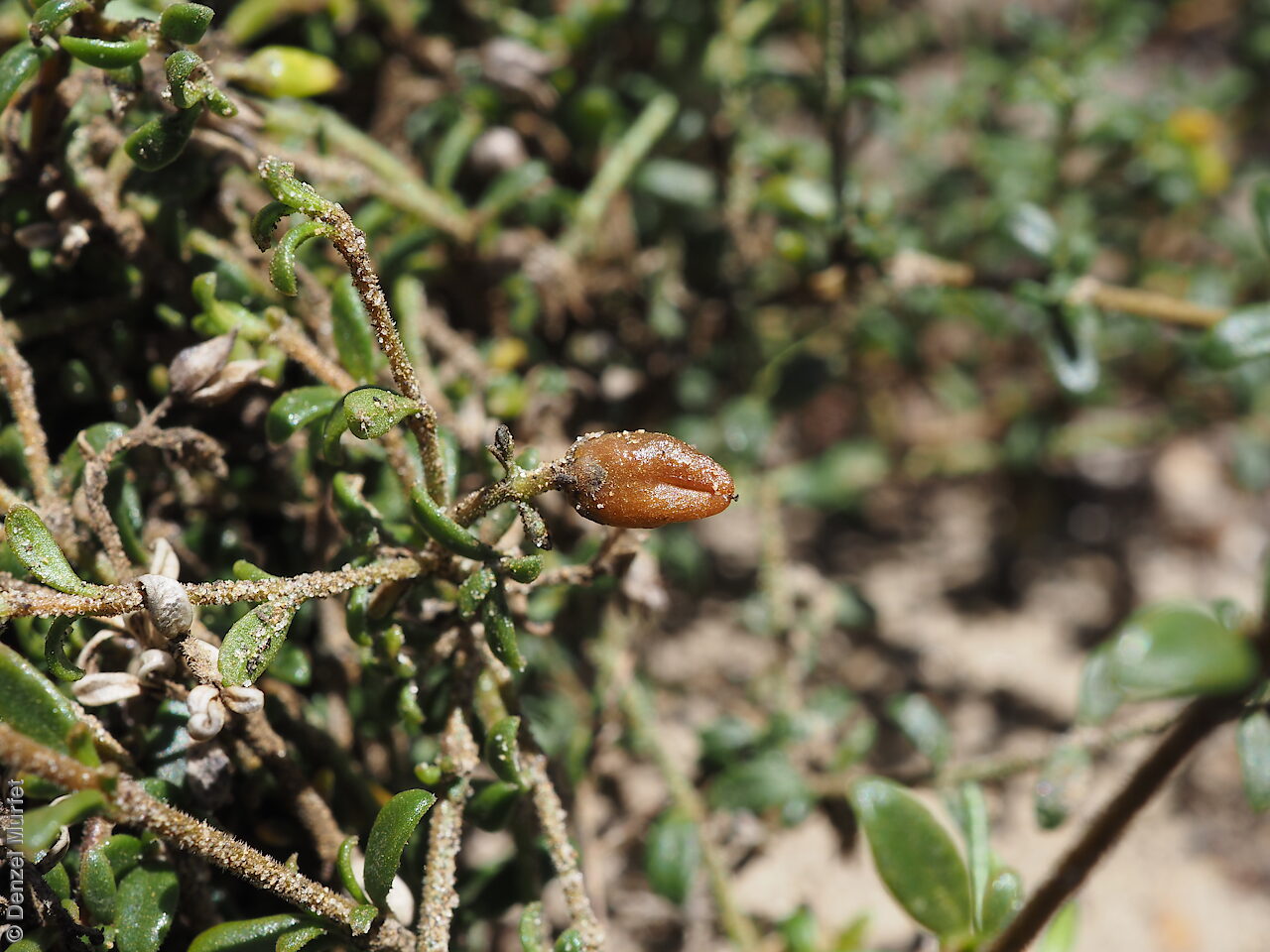
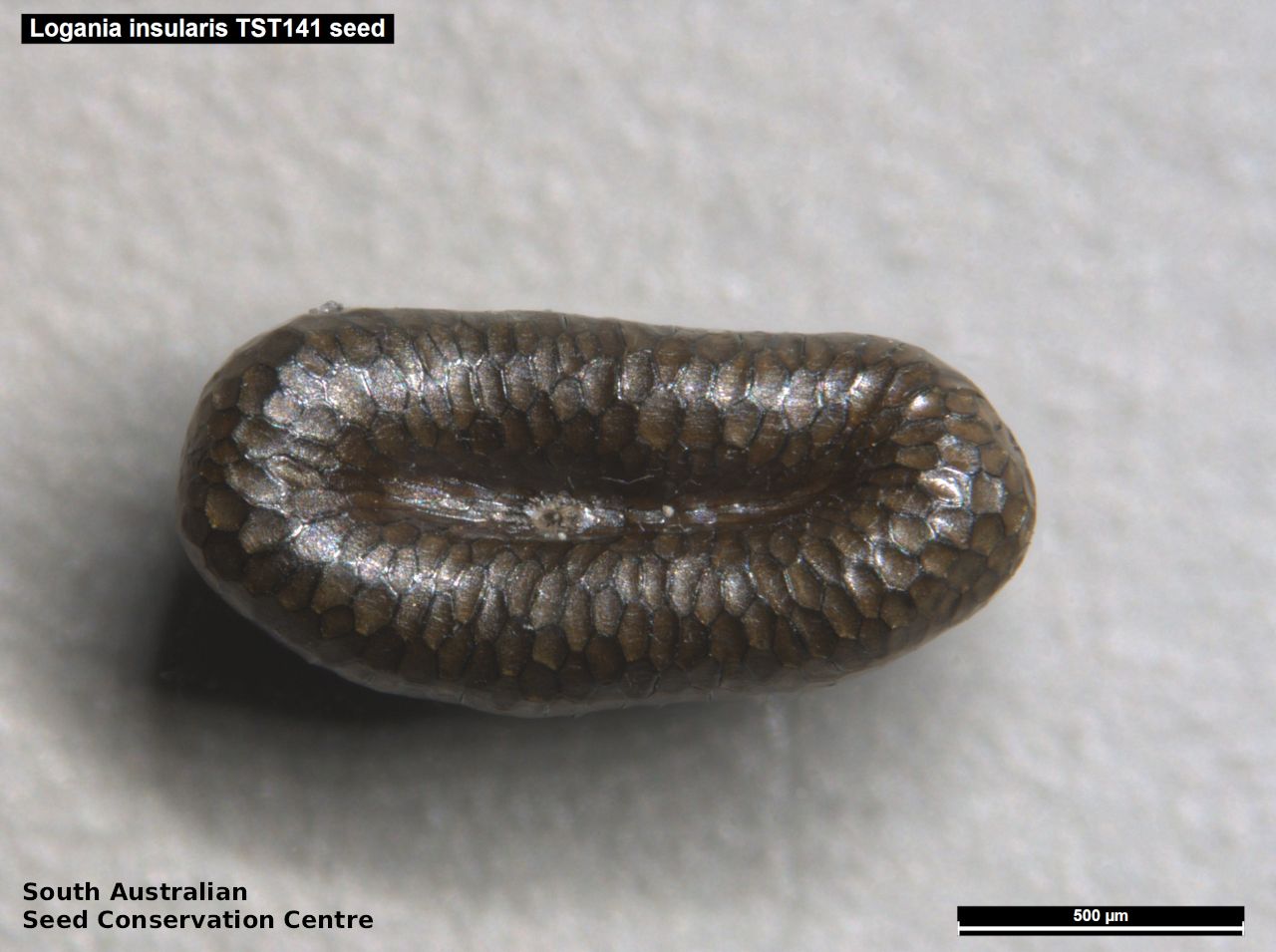
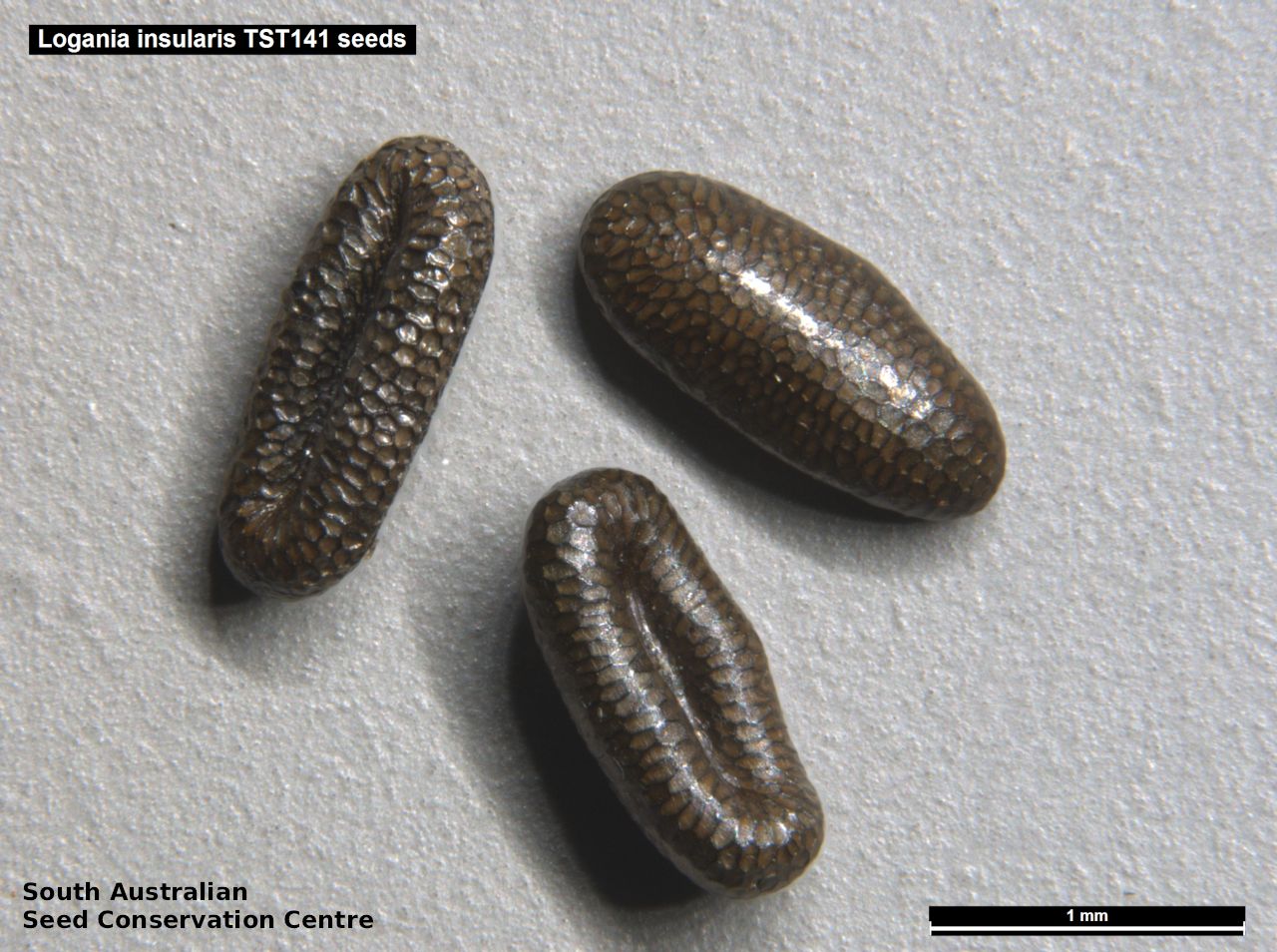
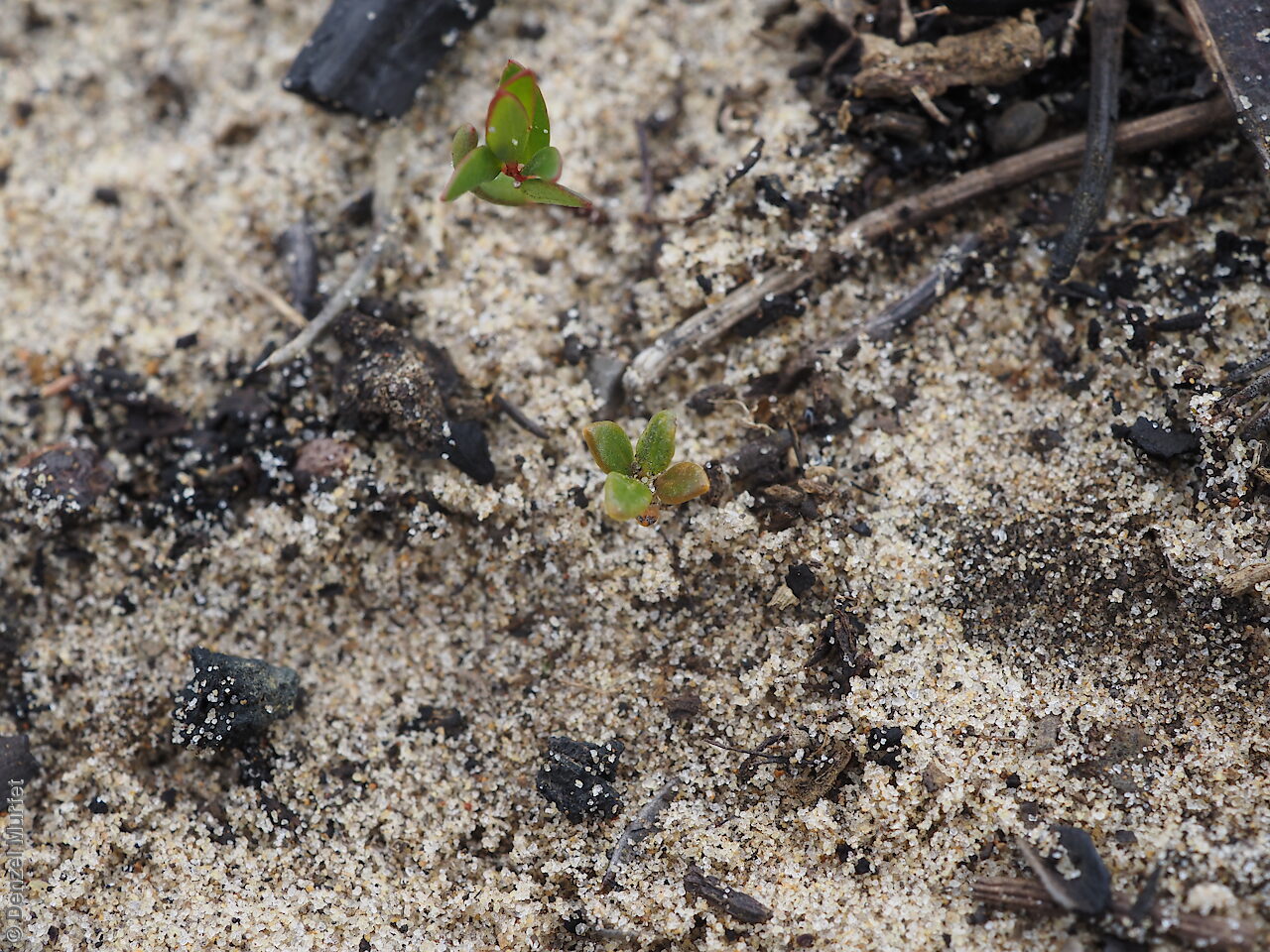

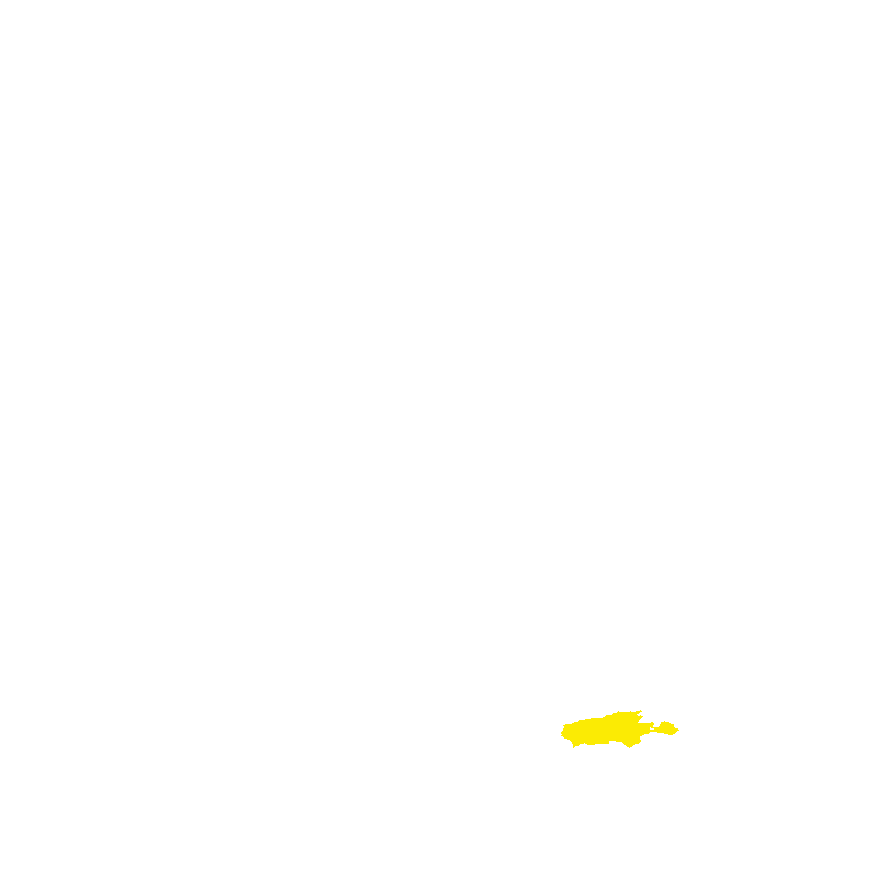
Botanical art
Etymology
Logania named after James Logan (1674-1751), an Irish born botanist who emigrated to North America, became Governor of Pennsylvania and wrote a book on the sexuality of plants. Insularis from the Latin Latin 'insula' meaning island, referring to its occurrence on Kangaroo Island.
Distribution and status
Endemic to South Australia and found only on the north-western tip of Kangaroo Island, growing along the coast in open mallee or low shrubland, on brown sandy soil overlying limestone. Native. Very rare in South Australia.
Herbarium region: Kangaroo Island
NRM region: Kangaroo Island
AVH map: SA distribution map (external link)
Plant description
Small erect shrub to 30 cm high, dioecious with minutely hairy stems. Leaves elliptic to obovate to 8 mm long and 3 mm wide, with scattered hairs, recurved margins and sessile or with stalk to 2.5 mm long. Inflorescence in short, few-flowered clusters with unisexual, cream to pale-yellow flowers. Flowering between September and November. Fruits are an orange-brown capsule to 3.5 mm long and 2.5 mm wide. Seeds are shiny black long convex seed to 1.5 mm long and 0.8 mm wide, with a reticulate surface. Seed embryo type is linear, fully-developed.
Seed collection and propagation
Collect seeds between November and January. Collect maturing capsules that are fat, turning orange-brown in colour, have not open and contain hard black seeds. Place the capsules in a tray and leave to dry for one to two weeks to split. Rub the capsules gently with a rubber bung to dislodge the seeds. Use a sieve to separate the unwanted material. Store the seeds with a desiccant such as dried silica beads or dry rice, in an air tight container in a cool and dry place. Seed viability is usually high.
Fire Response
Obligate re-spouter and re-seeder. seedlings observed but mostly resprouting from root-stock.
Longevity: >30 years
Time to flowering: 2-3 years
Recovery Work
In 2020-2021 this species was assessed post-fire in 1 year and 2 year old fire scars. Further populations will be assessed and seeds collected on Kangaroo Island in 2021–2022. Germination screening testing the response to fire cues will be undertaken in 2021.This project was supported by the Project Phoenix program.
| Location | No. of seeds (weight grams) | Number of plants | Date collected | Collection number Collection location | Date stored | % Viability | Storage temperature |
|---|---|---|---|---|---|---|---|
| MSB | 1,600 (0.39 g) | 100+ | 12-Nov-2008 | DJD1258 Kangaroo Island | 90% | ||
| BGA | 2,700 (0.730 g) | 35 | 5-Jan-2022 | JRG858 Kangaroo Island | 7-Jul-2022 | 100% | -18°C |
Number of plants: This is the number of plants from which the seeds were collected.
Collection location: The Herbarium of South Australia's region name.
% Viability: Percentage of filled healthy seeds determined by a cut test or x-ray.